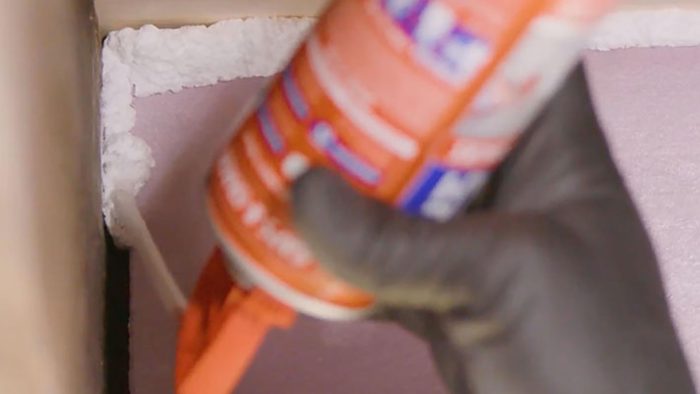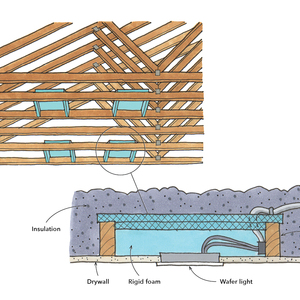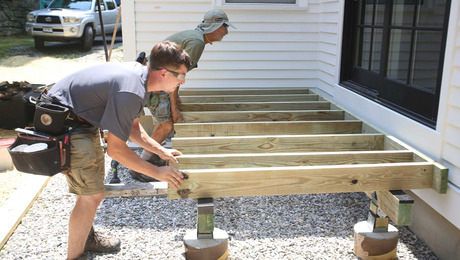How to Cut and Cobble Rim Joists with Insulating Foam Sealant
Join Tyler Grace and his crew as they work on insulation and air-sealing in the basement of the Loctite 2nd Chance House.
Sponsored by Loctite TITE FOAM
Join us as we visit the Loctite 2nd Chance House, where Tyler Grace and his team at TRG Home Concepts are working with Habitat for Humanity to rebuild this home using sustainable best practices. In this video, the crew is working on rim-joist air-sealing and insulation using Loctite TITE FOAM Gaps & Cracks. Watch the video or read on to see how they do it.
Here’s the Transcript:
Welcome to the Loctite 2nd Chance House. We’re taking this house down to the studs and we’re rebuilding it using modern methods and sustainable best practices. This project is being done in partnership with Habitat for Humanity, and today we’re in the basement. We’re going to be insulating and air sealing the rim joists with Loctite TITE FOAM Gaps & Cracks.

We’re going to be using a 2-inch rigid foam that we’re going to cut a little bit loose and then install in this cavity to the back of that rim joist, and it’s going to prevent condensation and potential rot or health issues down the road. I’m using some Loctite Power Grab to hold that foam in place until I can go back with our expanding foam and hit the perimeter.
Why Loctite TITE FOAM?
I do like using the Loctite TITE FOAM because it really adheres well to all of these old materials, and then it’s going to cure to be slightly flexible. So if something moves, expands, contracts, shifts, it’s not going to compromise that air seal. When it comes to cut and cobbling, you don’t have to be too precise. In fact, you actually want to leave a little bit of room around the rigid foam to use the expanding foam and make that air seal.
So we’re putting two layers of foam here. It’s a cold environment, but also we’re trying to get ourselves out past this wall stud so that we can foam this perimeter and over this wall stud as well and create that cohesive thermal break. This house is over a hundred years old. We are getting a second chance opportunity to fix it up to make it its best version of itself and air-sealing this basement. It’s really creating a comfortable and safe space for the future occupants.
RELATED STORIES


























View Comments
does the foam insulation need to be protected from fire?
Yes.